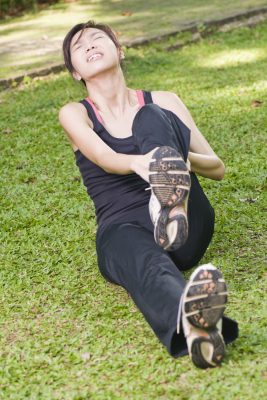No products in the cart.
Pain Management
Non-Invasive Pain Management | Wellness Philosophy
The experience of pain is individual and varies from one another, most do not seek any help unless the pain is unbearable and disrupting their daily life activities.
However when pain is escalated to its highest scale of 8-9, patient’s expectations and demands of rectifying the symptoms, are high and at times, unreasonable. When the patients dip into pain’s depression and denial stage, most expect the intervention to be immediate and recover, patients do not understand the accumulated pain trauma process, and they are not receptive to managing the pain progressively.
Instead of focusing on the diagnosis, pain symptoms must be well identified and defined. Most patients’ pain resurface after several intervention when intrinsic cause of pain is not identified and prevented.

The approach of Pain Management:
- What are you going to do with the pain?
- Can you live with the pain?
- How long can you still bear with the pain?
The approach of premature pain symptoms should be well managed with the above 3 questions, unfortunately most take it to the highest level of unbearable stage.
The first discomfort of pain stimulus usually alerts our attention of being unwell physically. Indicating pain condition or damages in our body. Therefore, pain management approach is about paying attention to the physical pain condition by identifying the reason of cause, make changes and protection to the pain symptoms and instill mindfulness to alleviate the deterioration of pain condition over time.
Pain is bigger than you think, and these are my definitions of pain:
Physical pain:
Involves physiological stimulus of sensory nerve, which triggers our brain-transmitting signal of tissue pain and damages.
Emotional pain:
A psychological & physiological pain that is derived from an unpleasant events or experiences which alters our mood or behaviors.
Pain affects people physically and psychologically far more than you can imagine. Both types are interlinked and cohesive experiences whereby physical pain is detrimental to our daily activities emotionally.
Most people endure pain in their everyday lives – at work, during physical activities and social functions. And while the pain may be bearable, it is still hindering you from achieving your optimal performance.
4 categories of physical pain:

Muscle Imbalance
Our body muscles work in pairs and oftentimes, we use one group of muscles more than the other. For example, when you sit for more than 5 hours at work in an up right position with a neutral spine (without any support), you are likely to experience and sustain exertion on your lumbar. Hence, your abdomen muscle is lengthened, which results in specific physical muscle imbalance.

Postural Dysfunction
Posture Dysfunction, which is a stage consisting of muscle imbalance that is accumulated over periods of time, results in Postural Dysfunction Pain. When we do not have a proper posture in our daily activities, we are likely to experience pain.
Resistance
Most of us understand and perhaps are aware of the
pre-conditioning physical pain, which may or may not be
bearable enough, lives with it.
Chronic
This is a stage where most people can avoid, if some amount of attention and effort is placed on this issue. Chronic pain means that the “stimulus” is perpetually living in you.
For some, it has already become a way of life. If you think about it, how much clearer can you be thinking without the pounding of a headache at work?
The philosophy of living a fulfilling, active and healthier lifestyle, is that pain should not be compromised.
The bottom line is, you don’t have to live with chronic pain and achieve less.
Based on my association & experience with patients, I have acquired 3 basic responses:
- The pain that I am experiencing is attributed to aging, or the degenerative process of my body and I submit to it.
- My medication (muscle relaxants, aspirins) is helping me.
- “I am still young so it’s ok to bear with the pain for now”.
“Nonsense & absurd”, I tell them. I have proven beyond any doubts of living a pain-free life myself and to my clients. The significant attribution of living a Pain-Free Lifestyle starts here.
